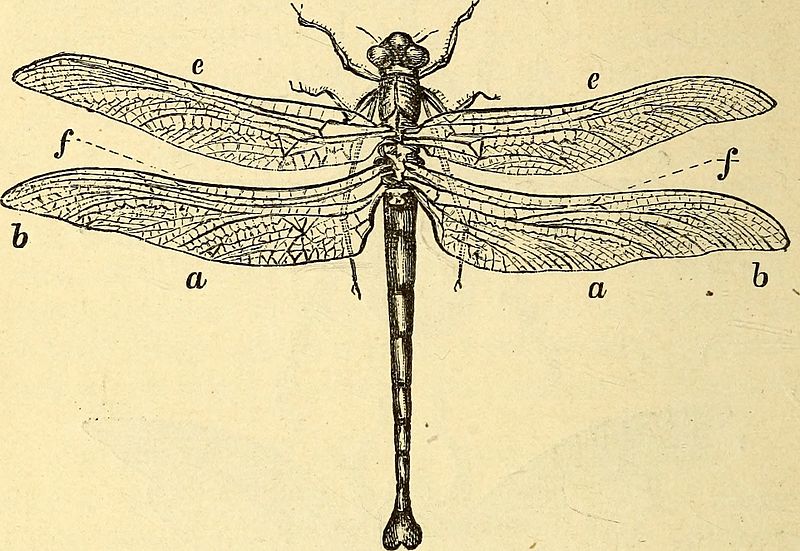Image: Animal locomotion, or Walking, swimming, and flying, with a dissertation on aëronautics (1874) (18194296972)

Description: Title: Animal locomotion, or Walking, swimming, and flying, with a dissertation on aëronautics Identifier: animallocomotio00pett (find matches) Year: 1874 (1870s) Authors: Pettigrew, James Bell, 1834-1908 Subjects: Animal locomotion; Aeronautics Publisher: New York, D. Appleton & company Contributing Library: Smithsonian Libraries Digitizing Sponsor: Biodiversity Heritage Library View Book Page: Book Viewer About This Book: Catalog Entry View All Images: All Images From Book Click here to view book online to see this illustration in context in a browseable online version of this book. Text Appearing Before Image: 172 ANIMAL LOCOMOTION. The wings of insects present different degrees of opacity—• those of the moths and butterflies being non-transparent; those of the dragon-flies, bees, and common flies presenting a delicate, filmy, gossamer-like appearance. The wings in every case are composed of a duplicature of the integument or in- Text Appearing After Image: Fia. 91.—The Dragon-fly (Petalura gigantea). In this insect the wings are finely curved and delicately transparent, the nervures being most strongly developed at the roots of the wings and along the anterior margins (e e, ff), and least so at the tips (&&), and along the posterior margins (a a). The anterior pair (e e) are analogous in every respect to the posterior (//). Both make a certain angle with the horizon, the anterior pair(ee), which are prin- cipally used as elevators, making a smaller angle than the posterior pair iff)-, which are used as drivers. The wings of the dragon-fly make the proper angles for flight even in repose, so that the insect can take to wing instantly. The insect flies with astonishing Original. vesting membrane, and are strengthened in various directions by a system of hollow, horny tubes, known to entomologists as the neurae or nervures. The nervures taper towards the extremity of the wing, and are strongest towards its root and anterior margin, where they supply the place of the arm in bats and birds. They are variously arranged. In the beetles they pursue a somewhat longitudinal course, and are jointed to admit of the wing being folded up transversely beneath the elytra.^ In the locusts the nervures diverge from a common centre, after the manner of a fan, so that by their aid the wing is crushed up or expanded as required; whilst in the dragon-fly, 1 The wings of the May-fly are folded longitudinally and transversely, so that they are crumpled up into little squares. Note About Images Please note that these images are extracted from scanned page images that may have been digitally enhanced for readability - coloration and appearance of these illustrations may not perfectly resemble the original work.
Title: Animal locomotion, or Walking, swimming, and flying, with a dissertation on aëronautics (1874) (18194296972)
Credit: https://www.flickr.com/photos/internetarchivebookimages/18194296972/ Source book page: https://archive.org/stream/animallocomotio00pett/#page/n197/mode/1up
Author: Internet Archive Book Images
Permission: At the time of upload, the image license was automatically confirmed using the Flickr API. For more information see Flickr API detail.
Usage Terms: No known copyright restrictions
License: No restrictions
License Link: https://www.flickr.com/commons/usage/
Attribution Required?: No
Image usage
The following 2 pages link to this image:

